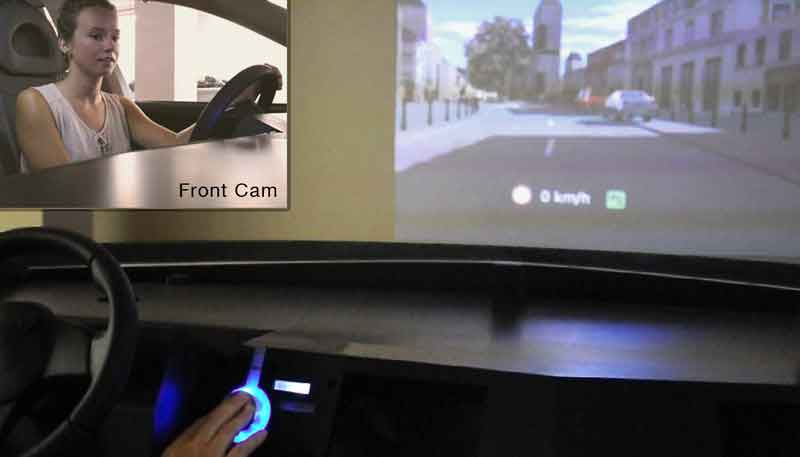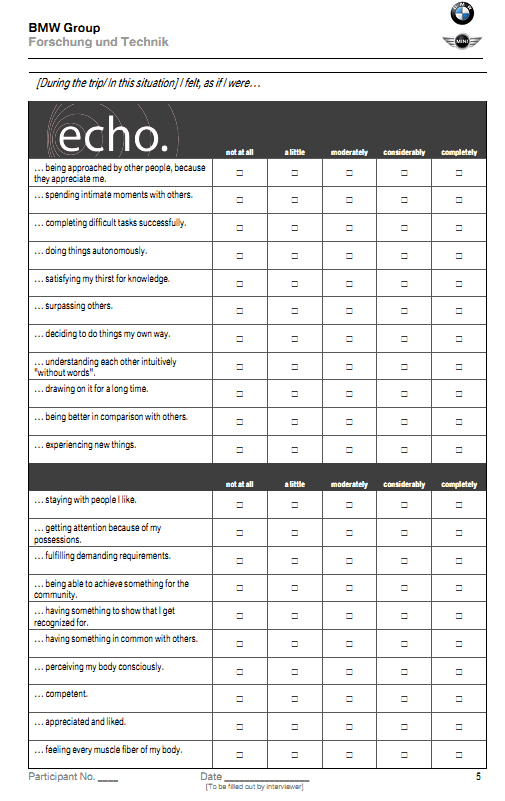Evaluate Components.
Evaluate a high fidelity prototype.
Why.
Evaluate to what extent you reached the design goal and whether the interaction addresses the needs or emotions you defined in the story.
What.
Test an advanced prototype in form of a extensive study.
How.
Advanced prototype, story.
Select a sufficiently large sample (at least 30 participants). Check quantitatively with the help of questionnaires (e.g. UXNQ, ECHO) whether the observed interaction corresponds to the experience intended by the story.
Ask users how they experienced the interaction and what or which attributes of the prototype they enjoyed. With the help of the laddering method identify the underlying values, motives and psychological needs of positively alluded attributes. Evaluate the answers from the interview with the help of a quantitative content analysis. In doing so, you can assign the statements to categories (e.g. usability, connectivity, fun) and count the frequency of answers. You can also count the frequency of the underlying psychological needs obtained with the laddering method. These answer frequencies should reflect the intended experience. If, for example, competence is the basis for the intended experience, then comments related to this need should be mentioned by many users.
The focus here lies on a simple operability and intuitive understanding of the prototype. You can do this either through questionnaires (e.g. SUS, for usability) or through objective data (operating errors, operating time, etc.) as well as questions concerning comprehension issues. The think aloud method is helpful here as well.
Findings on the experience potential of the prototype.
Insights
Contrary to the evaluation of a first prototype, the story and the creation of the story's context are of great importance at this stage. For the study, create the scenario of the story as precise as possible so that the test persons relive the experience and are able to evaluate it afterwards.
References
Sarodnick, F., & Brau, H. (2006). Methoden der Usability Evaluation. Verlag Hans Huber. Field, A. P., & Hole, G. (2003). How to design and report experiments. London: Sage publications.




